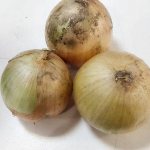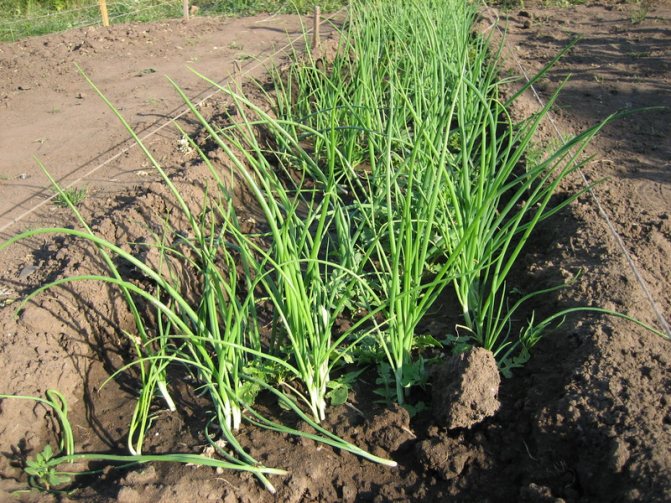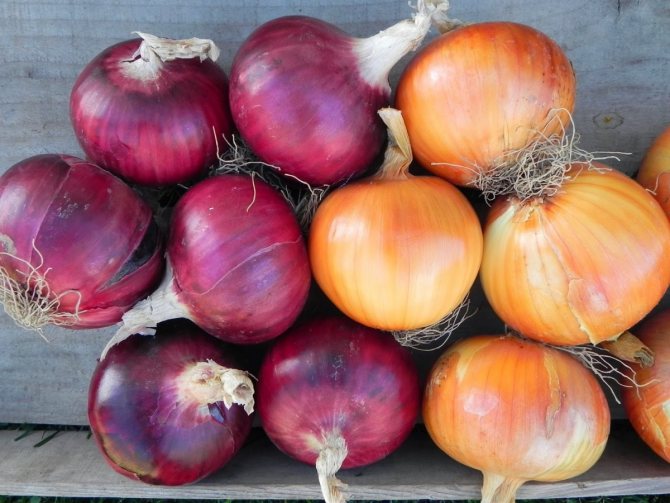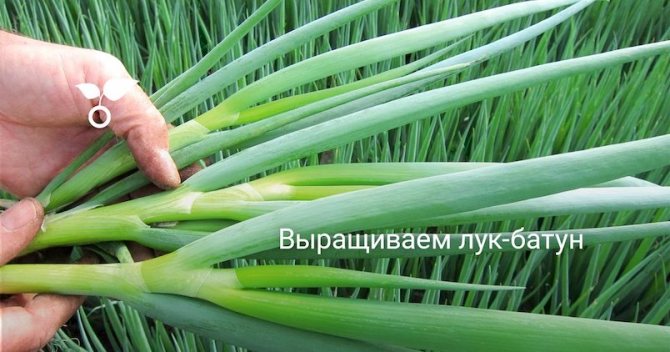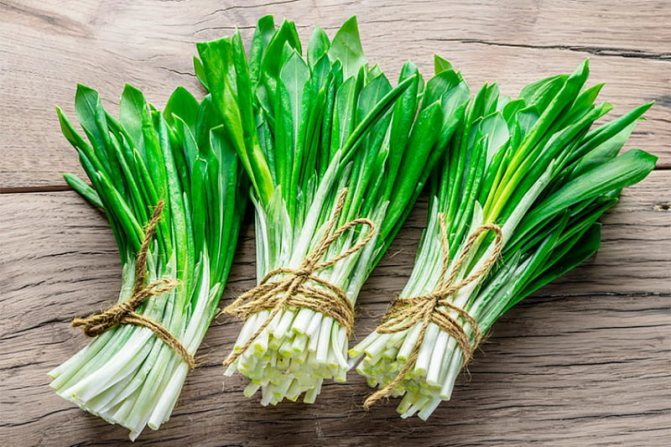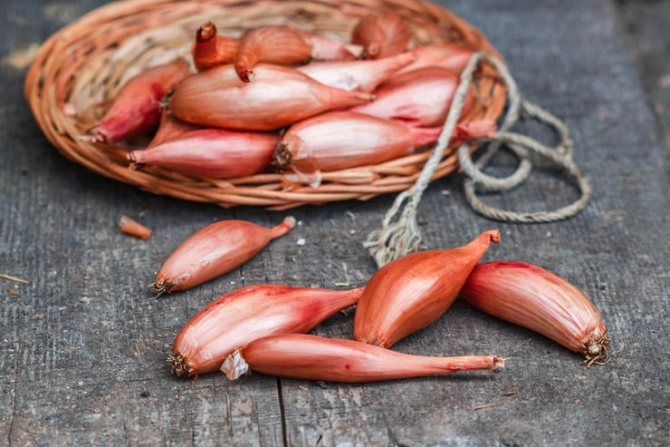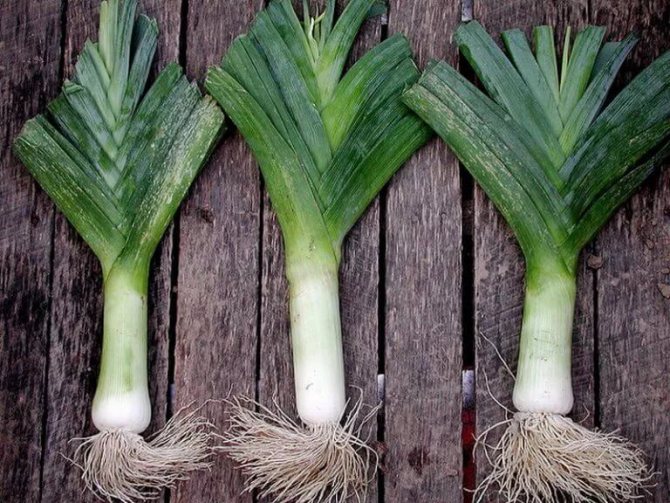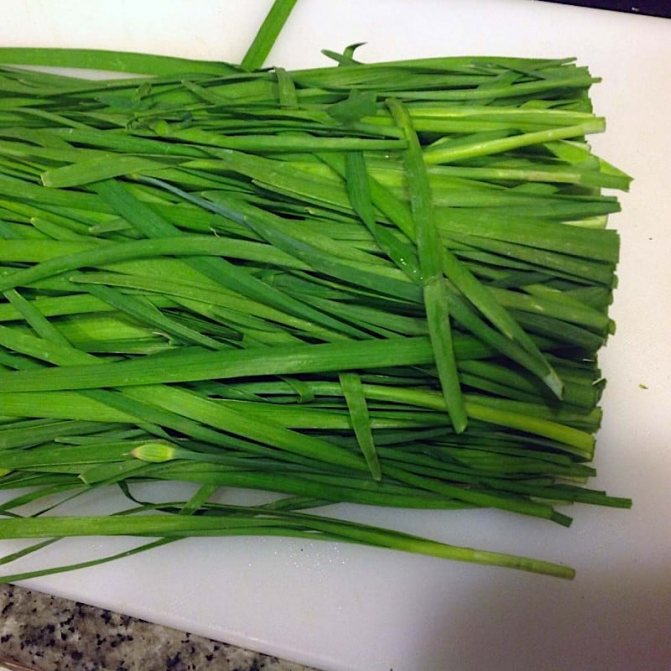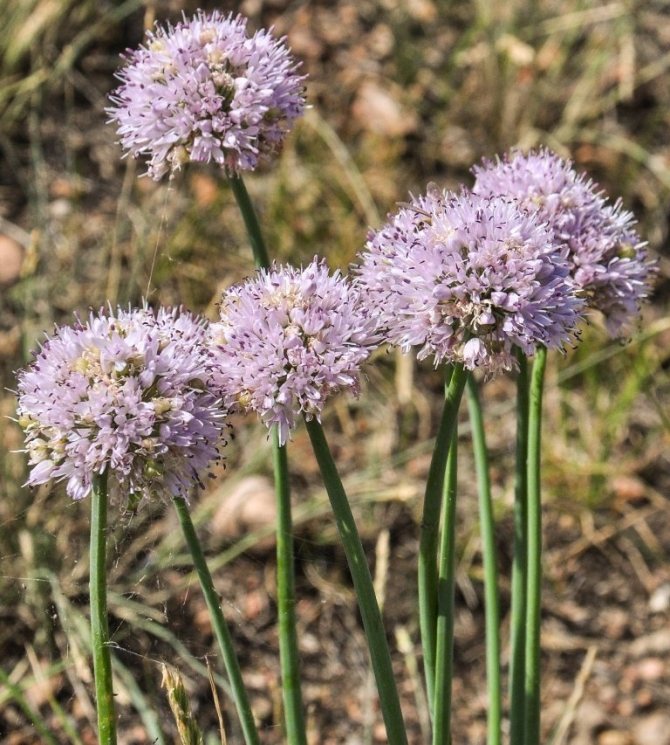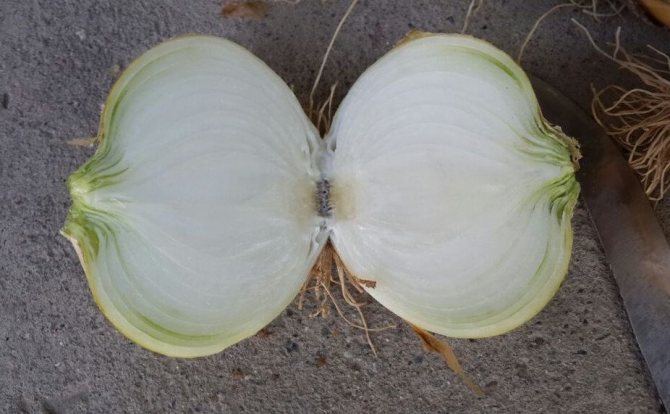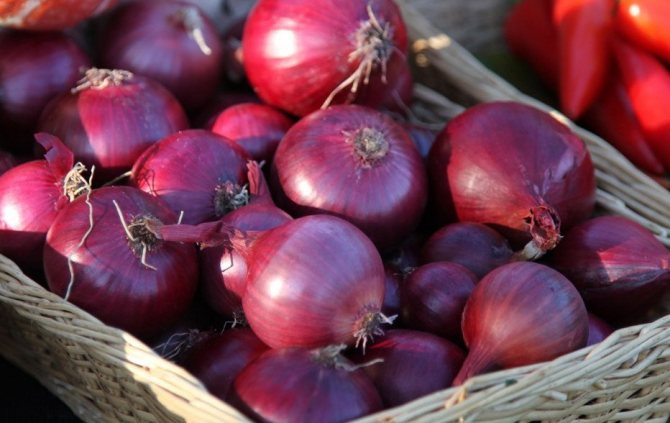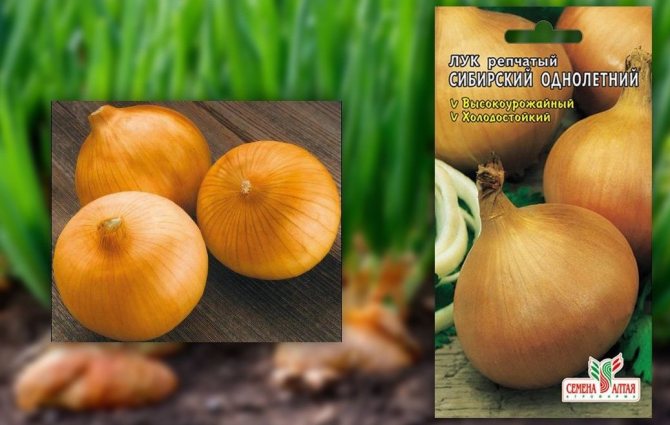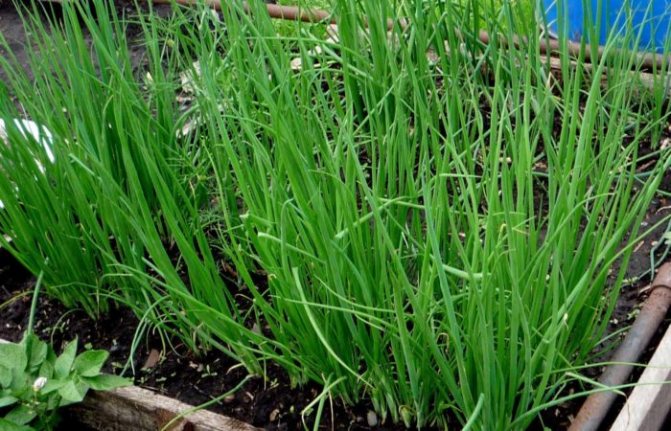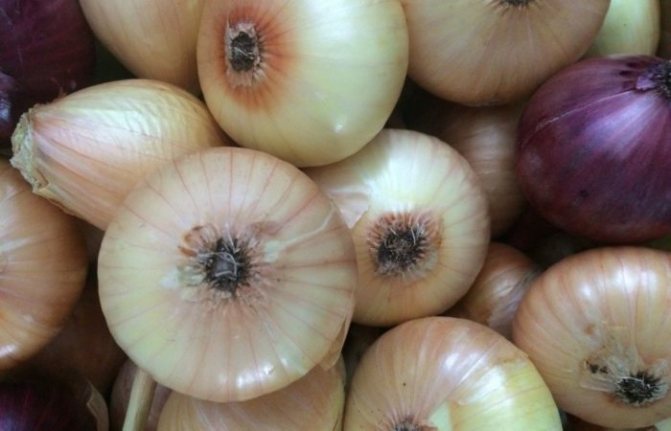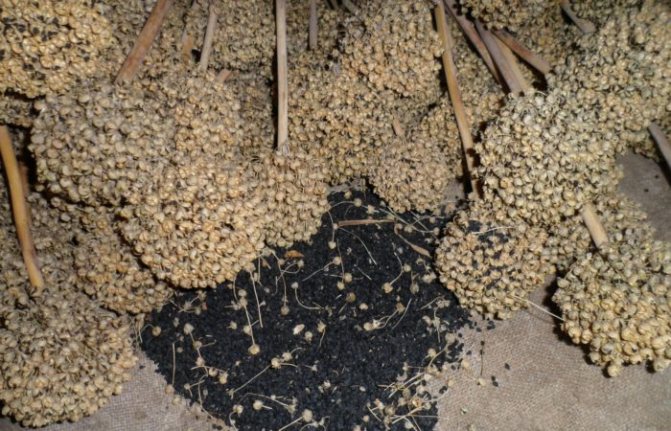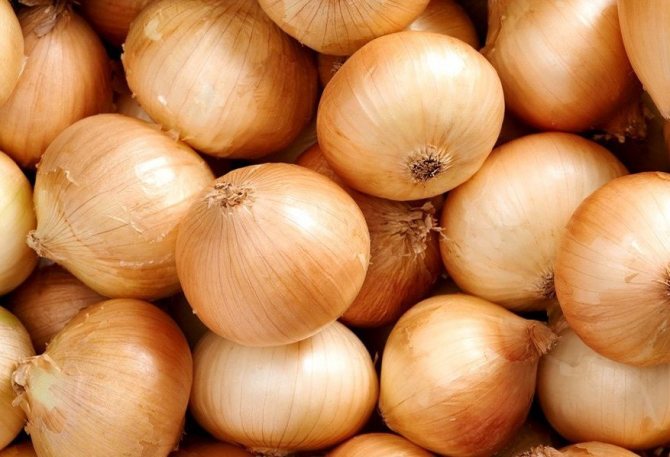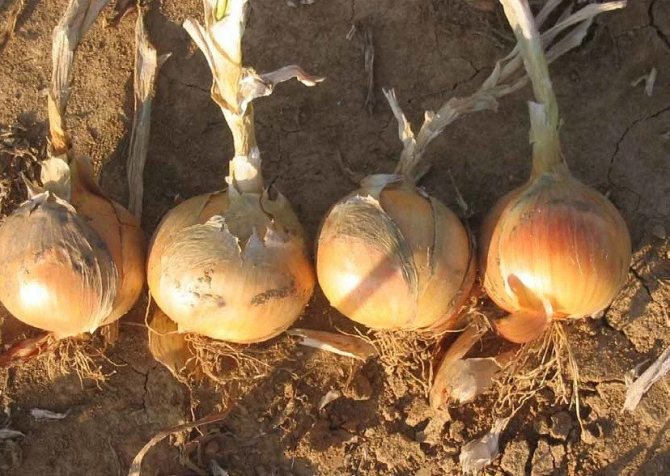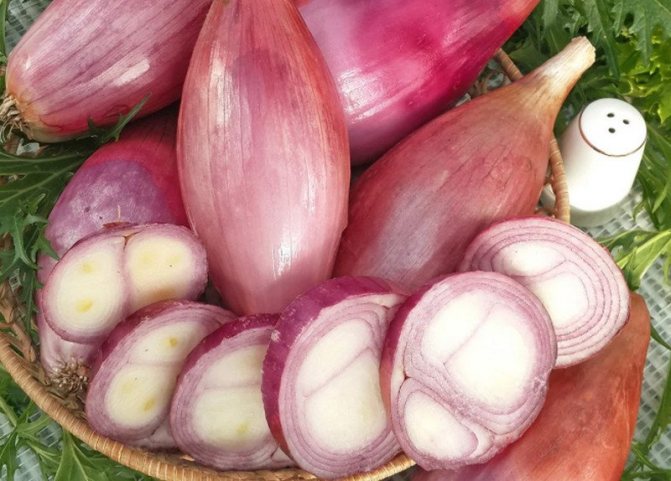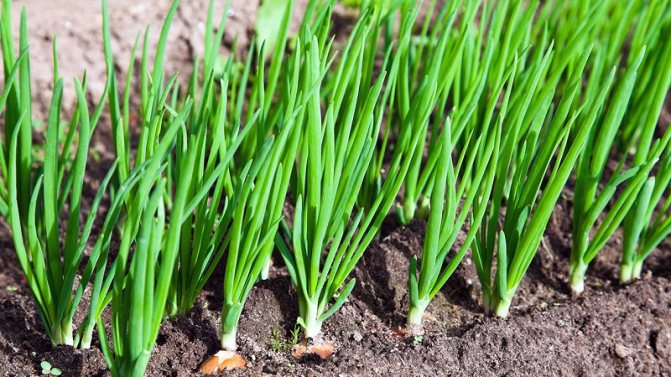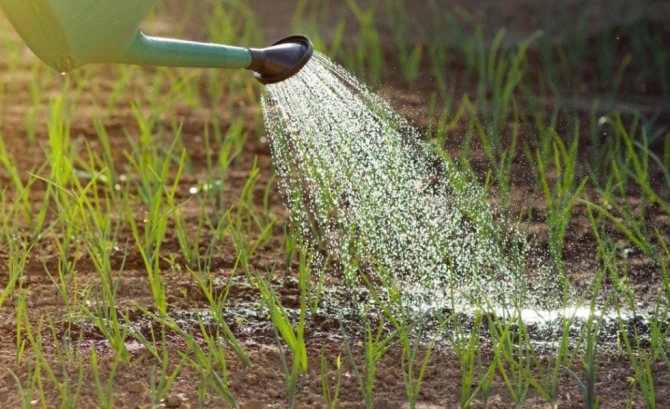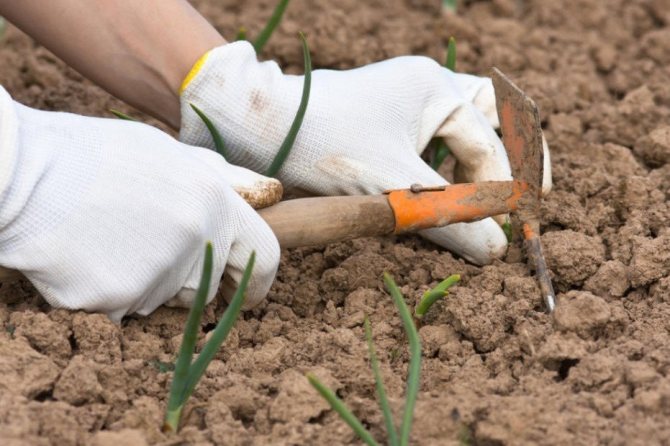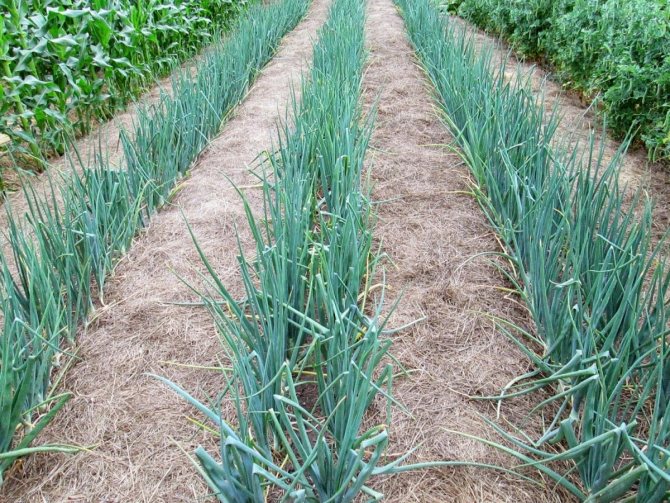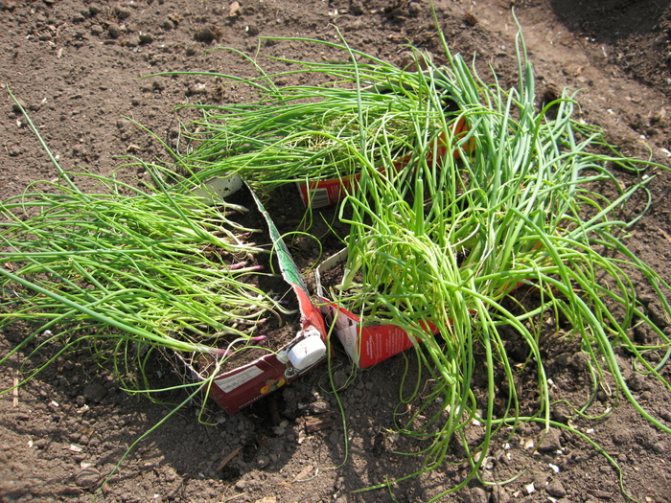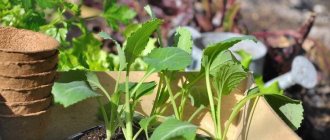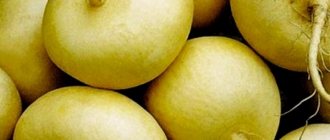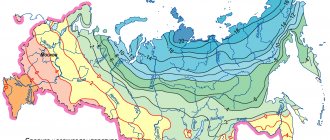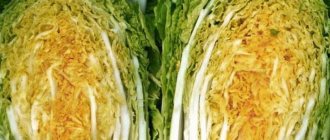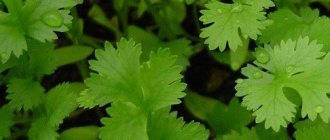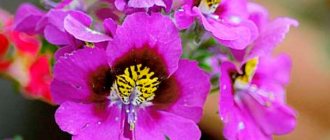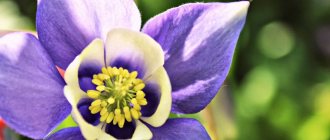The best varieties of onions of domestic and foreign selection, as well as F1 hybrids, give a good harvest only if properly grown. Agricultural technology for cultivating varietal onions comes down to choosing the right variety of vegetables, depending on the climatic conditions of the region, timely loosening of the soil, and sufficient watering. The best varieties (with a description) of onions are responsive to soil fertility in the country, which depends on fertilization and temperature conditions. Large bulbs can be obtained with good soil aeration.
Description of onions
Depending on the preferences of the summer resident-gardener, you can choose for planting in a suburban area varieties of onions with a spicy or sweet taste, early, mid-late or late varieties of vegetables, multi-nested, medium-nested or small-nested.
Obviously not to be mistaken with the choice, you need to find out which varieties are the best, and you need to study their qualitative characteristics. Having studied the variety of varieties, you can choose for cultivation in a suburban summer cottage one that will give a good harvest in accordance with the qualitative composition of the soil and climatic conditions (and the onion will also help save the cucumbers growing nearby from bacteriosis).
Subspecies
Yuzhny
The most thermophilic subspecies. When vegetables are grown in cold regions, the variety of this subspecies loses its sweetness.
Northern
Unpretentious and cold-resistant.
White
It grows well at moderate temperatures and its main value is that it leaves no odor after eating.
Each subspecies has its own successful varieties, therefore, before growing and choosing a turnip onion, you need to familiarize yourself with the characteristics.

By maturity
- Early - the growing season lasts 90 days,
- average - about 110 days pass from planting to harvesting vegetables,
- late - vegetables ripen in 4 months.
By the number of vegetables that have appeared and by the strength of branching, the varieties are subdivided
- Multi-slot varieties form more than 5 bulbs,
- middle-nesting - in one place from 2 to 3 fruits are formed,
- small-nest - up to 2.
Depending on taste
- Sharp,
- peninsular,
- sweet the taste.
When to plant?
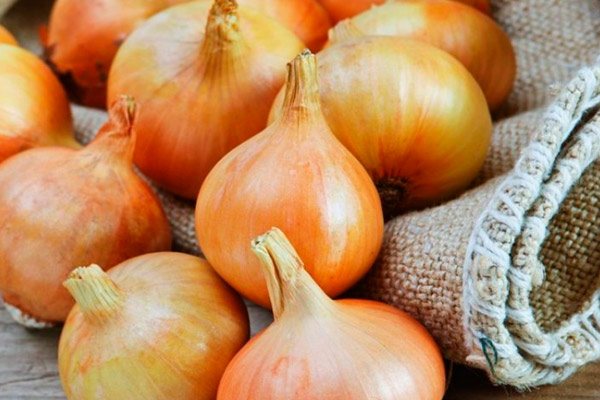

The choice of planting time directly depends on the climatic conditions in the region. When calculating the timing, one should be guided, first of all, by the condition of the soil. It should not yet completely warm up, therefore it is recommended to be carried out no later than the last ten days of April for central Russia. In cold areas, planting can be postponed until the first week of May.
With the seedling method, seeds are planted at home, starting in February, and the subsequent picking of seedlings into open ground is carried out no earlier than the second half of April. In the north, it is permissible to transplant onions until the first week of May.
Some people prefer to plant nigella for the winter. In the central and western part of Russia, winter onions are sown from the second decade of August to the beginning of September. In the south, planting can be postponed until the end of September. Onions can tolerate up to -15 ° C without snow cover, so it is not advisable to use this method in cold regions.
Early varieties of onions
A feature of early onions is their rapid ripening during a short growing season.
Early farmer
Early ripening is characteristic.Large onions, weighing from 140 g to 270 g. Sharp but pleasant taste. The bulb has a dense structure, round shape, thin neck. The scales are shiny, yellow, white when ripe. Vegetables are stored for a long time.
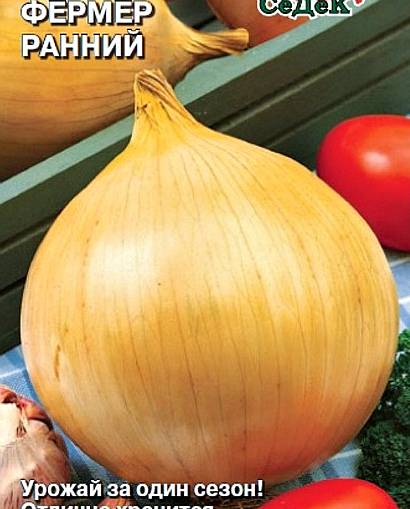

Edelweiss
The bulb has a transverse elliptical shape, the tone of the scales depends on the juiciness. In drier vegetables, the scales are yellow or brownish, with juicy pulp - snow-white. The variety belongs to high-yielding, the average weight of one vegetable is equal to or exceeds 85 grams. Leaves are erect and semi-erect, short and medium, deep green. Keeping quality is equal to 78%.
Ellan
Elite early maturing vegetables, resistant to diseases, in which there is a rapid development of both the underground and aboveground parts of the plant. An oblong or rounded bulb is large enough, weighs 300 grams. It has a sweetish taste with a slight twist. A good harvest can be obtained with occasional watering. The yield is higher than the norm, the shelf life of the bulbs is 8 months or more.
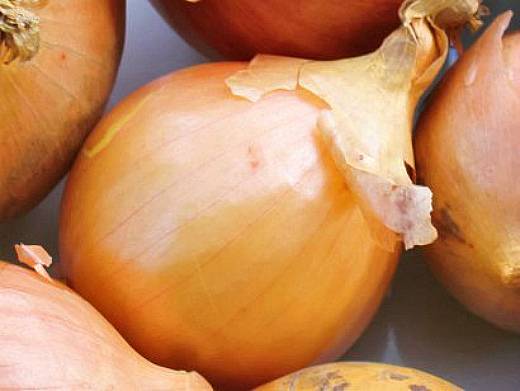

Growing leeks for the season
Leeks are grown by seedlings or sowing in the ground... When choosing a variety, they are guided by climatic requirements, since the growing season of a crop is 150 days or more.
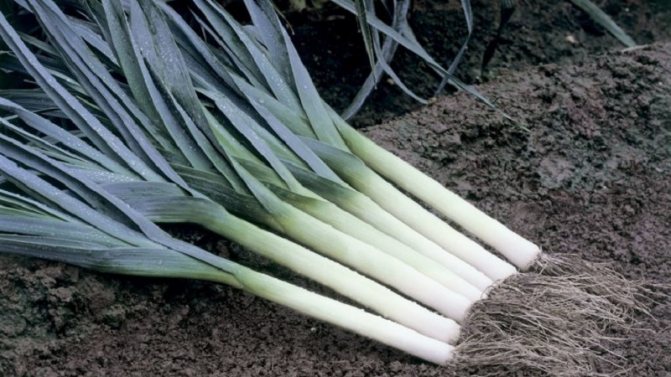

Direct sowing in the garden is used in the southern regions, where there is no danger of early frosts. With the seedling method, seeds are planted from the end of February, but the seedlings dive into separate pots... Plants are taken care of, as well as onions.
Leeks are planted in rows 15 cm deep with a distance of 20 cm from each other. When the stem is compacted, hilling is carried out. In total, 3-5 such manipulations are done per season, which contribute to the formation of the bulb on the stem.
The crops are stored in the basement, in wet sand.
Varieties of the best mid-season onions
Supra
The variety is perfectly stored and retains its delicate taste until spring. The structure of the onion is dense, even on all sides and with a rounded shape of the bulb, reaching 250 gr. "Supra" is resistant to pest damage and does not succumb to diseases. The dried scales of vegetables are dark yellow, during the growth period they are snow-white. The taste is semi-sharp.
Chalcedony
A good variety for cultivation in the south of Russia. Mid-season, harvesting occurs 95 days after sowing the seeds. The yield per square meter is up to 4 kg. Marketable onion weighs 85 g, but there are also giants up to 300-350 grams. The variety is well kept, is not susceptible to the disease of peronosporosis, but sometimes it is damaged by cervical rot.


Alvina
This mid-season vegetable variety is grown by sowing seeds or planting sets. The crop is harvested 115 days after planting. Flattened bulbs, up to 80 gr. palatable weights, semi-sharp. Dry scales are purple, red, or lilac-white. It is better to use it for canning, its preparations for the winter are good.
What is good
- Good storage performance,
- high yield of vegetables,
- full ripeness of the variety.
Arzamas local
It can be cultivated both in open and closed ground. A popular variety of domestic producers. The growing season is 105 days. Vegetables are streamlined and dense in structure. Fruits are sometimes elongated with a mass of 80 grams. The pulp is snow-white, at the neck it acquires a greenish tint. Dry brownish husk with slight yellowness. The variety is valued for its yield and full ripeness. During transportation, it retains its structure, is well stored, but one of the shortcomings is its susceptibility to being hit by an onion fly. It tolerates a decrease in the temperature regime, it can be cultivated in the Non-Chernozem zone of the Russian Federation, in some regions of the Volga region, the Urals.


Late onion names
Volzhanin
A ripe vegetable onion, with a dry husk tightly attached to it, weighing up to 130 grams, has a rounded shape. The pulp is snow-white, pleasant to the taste, with a pronounced sharp edge. The growing season is 140 days.Depending on storage conditions, the variety can be stored for up to 9 months. With good care and timely watering, the yield is high. Zoned in the Volga region and the North Caucasus. The best variety of late-ripening bulbs.
Snowball
This is one of the noteworthy varieties of white onions, and it can be zoned everywhere. It is intended for preparing salads and keeps well until spring. Large onions of regular shape, white flesh.
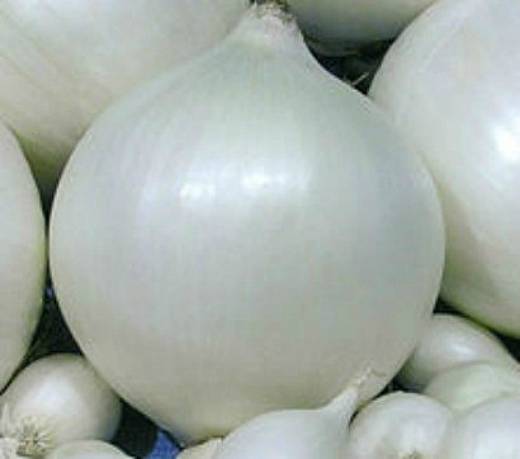

Setton
Large onions intended for long-term storage with a weight ranging from 140 g to 190 g. The pulp of the onions is yellowish with a pungent taste.
Farmer late
Late ripening variety with a spicy taste. Ball-shaped bulbs can weigh up to 350 grams. Dry scales are golden brownish, juicy ones are whitish. Vegetables are resistant to diseases and have a long shelf life.
The best spicy onions
A feature of the spicy variety is the rapid ripening of the bulbs. Vegetables are stored for a long time, are characterized by a high content of sugars and essential oils, but they are low-yielding.
Stuttgarter Riesen
Sufficiently productive variety with an average ripening period, characterized by good keeping quality. Bulbs are large, flat-round and dense in structure, weighing 50-90 grams, covered with yellowish-brown scales. Vegetables can be planted before winter. Grown through sevok.
Strigunovsky local
The bulbs ripen a maximum of 3 months after planting. To obtain beautiful, juicy and dense, slightly flattened or round specimens of a pinkish-yellow color, it is recommended to grow the variety from seedlings. Ideal for harvesting and fresh consumption. Bulbs develop well regardless of climatic conditions, that is, crops can be obtained in areas with an arid climate and in areas where rainfall is frequent.


Galileo
The variety is intended for outdoor cultivation only. The maturity of the bulb occurs in a period of slightly more than 4 months after planting. A large specimen can weigh 150 grams. Greenish-white flesh of dense structure, vegetables have a semi-sharp taste. Stored for up to six months.
Kaba
Due to its taste, the Kaba variety is used to add to salads and is considered one of the best. Ripening of the bulbs occurs 4 months after planting. Large vegetables have a golden yellow color with a brownish tint and weigh 200 grams. It is better to grow a crop in 1 year (from the moment of sowing seeds directly into the ground and before harvesting).
This variety is not intended for long-term storage, for the most part it is eaten as it ripens. It is characterized by a loose structure of the bulb, which leads to injury during harvesting.
Self-cultivation of seeds
To get quality seeds, it is best to grow them yourself. How to grow black onion seeds? It is easy to get them, the main thing is to follow the instructions given later in the article. Pick a few of the prettiest and finest bulbs of your choice. In early spring, when the snow has just melted, plant them in the ground. This can be done in the fall, by well mulching the planting material with organic matter. The landing site must be dry and sunny. It is advisable to plant dill and calendula nearby so that they add nutrients to the soil and scare off pests. And if you grow carrots nearby, then future seeds will not be threatened by an invasion of onion flies.
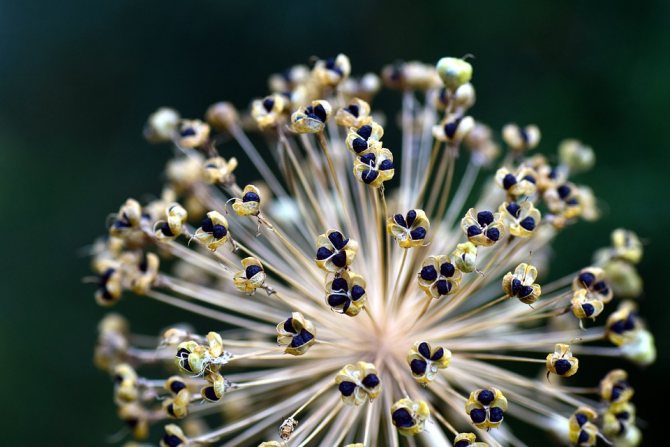

To grow onion seeds at home, you need to prepare the ground. Dig up the soil well before planting and add humus mixed with wood ash to fertilize the planting site. Over time, the onion will emit a peduncle with small black seeds. It is because of their color that the name "black onion" comes from. The arrows are quite high, so many gardeners tie them up.Onion seeds do not ripen at the same time, and often the owners lose half of them as a result of shedding. To avoid such a problem, tie gauze around the umbrella, then everything that crumbles before the remaining seeds ripen will fall into a linen bag.
Sweet onion
This type of vegetable produces a fairly high yield, tastes good, but requires a warm climate to grow.
Exhibition
The variety comes from Holland. Large, dense bulbs have a weight of 100 grams and more, a rounded and semi-elongated shape. The composition of sweet onions contains carbohydrates. The growing season ends 120 days after the seeds are planted in the soil.
Advantageous characteristics
- High yield of vegetables,
- large bulbs are not susceptible to disease,
- sweet,
- high adaptability to growing conditions,
- during the cultivation period, solid bulbs grow from seeds.
The only drawback of this variety is not such a long shelf life - 4-5 months.


Seedling care
The main requirement when growing seedlings of this culture is to create an optimal temperature regime. The box with seedlings must be kept at 16-20 ° C, otherwise the onion may stretch out. Already after the appearance of the first shoots, you can begin to carry out regular ventilation.
To do this, a box with seedlings is taken out into a room with a temperature of up to 12 ° C, where it can be left for 4-5 hours. In an apartment, it is advisable to carry out additional lighting, for example, using fluorescent lamps.
The optimal daylight hours for onion seedlings are 12-14 hours. In addition, you need to protect seedlings from direct sunlight, which can be detrimental to young plants.
Throughout the entire time of growing nigella, you need to check the condition of the soil. It should not be too wet, but it should not be overmoistened either.
It is recommended to spray with water at room temperature at regular intervals 2 times a week. However, you can also water the crops as the top layer of the soil dries out.
Names of productive onion varieties
Aleko
Mid-season variety, bulbs are deep purple in color. The ripening period ends a maximum of 100 days after planting. Vegetables are characterized not only by high yields, but also by a large amount of greenery. When planting from one nest, the Aleko variety produces 2-3 bulbs, each of which has a fairly large mass - from 90 to 100 grams.
Benefits
- Large bulbs are suitable for long-term storage,
- high productivity of vegetables,
- pungency gives the dishes unusual flavors.
It should be noted that the variety is susceptible to disease, therefore, at the first sign, it is necessary to fight the disease.
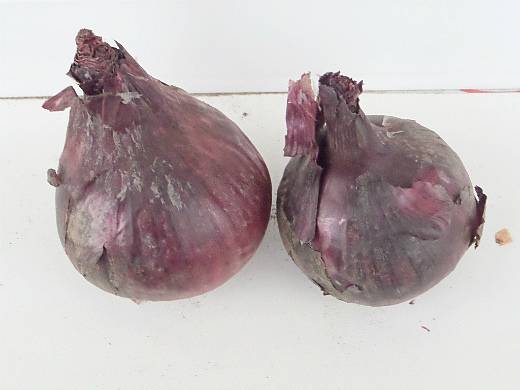

Golden
A mid-season variety bred as a result of painstaking selection when crossing many others. The bulbs have a rounded, slightly flat shape, some specimens can be elongated-oval. The scales are light brown or golden yellow. The pulp of vegetables is snow-white with a slight greenness. A high yield of vegetables: 2-3 kg are obtained from a garden bed with an area of \ u200b \ u200bm2. Bulb weight ranges from 50-130 grams.
Main advantages
- Low nesting, which allows you to get large bulbs,
- good keeping quality,
- excellent taste and beautiful appearance.
The Zolotisty variety is preferable to grow in warm regions.
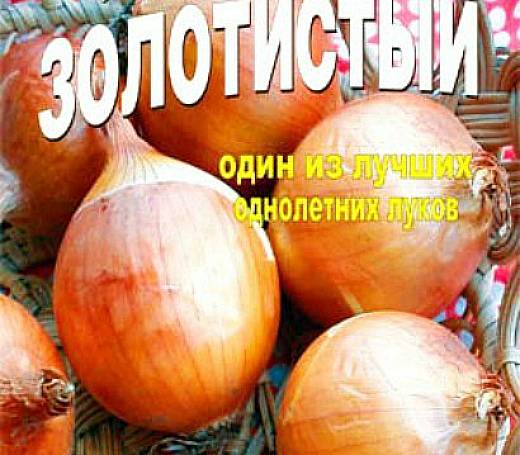

Timiryazevsky
The variety is good for cultivation in cold regions. The yield per square meter garden is 3.5 kg of onions. Dense in structure, round or flat in shape, the bulb weighs from 50 g to 70 g. The pulp is snow-white, the scales are golden yellowish.
Advantageous characteristics
- Small-breeding variety,
- high yield of vegetables, good and long shelf life,
- high adaptability to changes in weather conditions,
- short growing season.
This variety of vegetables has no disadvantages. Growing can be done in any region, since the fruits have a short ripening period.
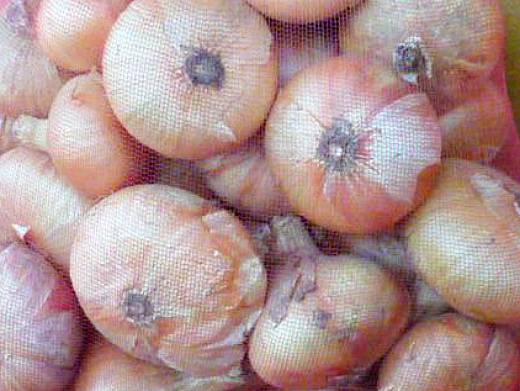

The best hybrid onions
Benefit F1
The late-ripening hybrid came to us thanks to the selection work of Spanish scientists. Popular. Round, even and dense bulbs with dark bronze husks have a long shelf life of up to 8 months. The harvest of vegetables is above the norm. During the growing season, it grows a feather, so the variety is good both for preparing salads and preparing for the winter.
F1 bonus
An early variety of American-Japanese selection, suitable for eating and for long-term storage (up to six months). The condition for good preservation of onions in winter is good drying in autumn. Correct onions of vegetables with firm pulp and golden scales. The variety is high-yielding, as evidenced by the collection from a square from 8 to 9.5 kg, with an average fruit size of up to 75 mm.
Candy F1
From sowing the seeds of the plant to harvesting the fruits, it takes 80-88 days. The highest-yielding and fastest-ripening hybrid, suitable for direct consumption and for short-term storage - up to 4 months. The hybrid is suitable for early marketing, the variety is not susceptible to pink rot.
Mazila F1
Hybrid early ripening variety. Red onions are good for eating feathers and for short-term storage, no more than 3 months. Vegetable vegetation period lasts 85-90 days. Round bulbs have a uniform structure and do not crack. The scales have a pleasant deep reddish color, the pulp is sharp in taste. Vegetables are planted in seedlings and seeding directly into the ground. The hybrid variety "Mazilla F1" is resistant to fusarium wilt, does not undergo pink rot.
Solution F1
Hybrid early variety. From sowing to harvesting, 100 days pass. The aligned bulbs are rounded, without grooves. Among the hybrid ones, they are considered the highest yielding. Dry scales of a dark brownish tone with a shiny sheen. Hybrid "Solution F1" can be grown in all regions of Russia. When growing early varietal vegetables, it is recommended to feed in a shorter time, since the growing season is short.
Benefits of the variety
- High yield,
- early ripening period,
- intended for storage,
- tastes good.
Hilton F1
The bulbs have an even, smooth, rounded shape with scales of a shiny, brown, slightly darkish color. Early ripe variety. From a square meter, you can get up to 45 kg of products. On average, onions weigh 120 g. Suitable for adding to salads, for preparing preparations with vegetables and separately, for fresh consumption. Hilton F1 fruits are stored for 4 months. Advantages: early ripening with high yields. Suitable for cultivation in any region of Russia.
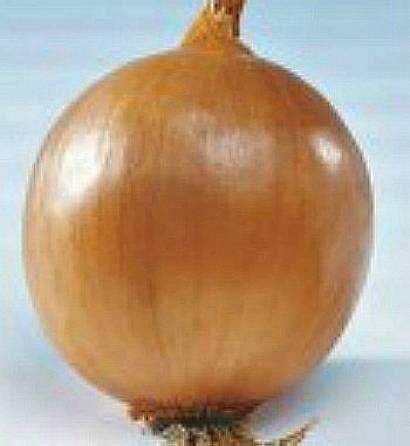

Attention!
To obtain a rich harvest, it is necessary to ensure sufficient watering, since this variety is very picky about soil moisture. The feeding period lasts until the middle of the growing season; further fertilization is impractical, since the growing season can be extended.
Universo F1
An annual, late-ripening hybrid variety. Vegetables have a semi-sharp taste. After germination of the first shoots and before harvesting, 115 days pass. An important condition for the normal winter storage of onions is the timely harvesting of vegetables. Work is required even before the rainy season. Onions can be stored for a long time after drying in the sun. Compliance with the rules of collection and drying will provide the bulbs with long-term storage, up to 0.5 years. The inner plates of vegetables are thick-walled, crispy and quite juicy. Pleasant taste. A high-yielding variety that resists diseases such as fusarium. The onion is large in size, its most gigantic specimens reach a mass of 800 grams.
Panther onion variety
One of the hybrids is the Panther winter onion, which is considered mid-season and belongs to the Japanese species.Such a plant grows quite strong, with well-developed foliage of a dark green color, as well as with a powerful root system. The fruits of this variety have a round shape and a thin neck, the upper ones are colored brown-bronze, and their weight can grow from 165 to 205 g each.
It is better to start sowing such onions at the end of August, then in the spring, in the fresh vegetable market, you can provide excellent bunches of Panther onions, and a little later, excellent bulbs.
This hybrid variety is distinguished by such qualities as good keeping quality, as well as frost resistance, it can tolerate up to -28 * C. It should also be noted that it is not subject to shooting.
This kind of winter onion can adapt very well to different soils and climates of our country, but it can be especially productive in the southern regions.
Onion variety Comet
Comet is a hybrid white onion that is considered to be medium late. For its growing season, it takes about 115-125 days from the moment the first shoots appear. Such a plant grows quite powerful and sturdy. Its fruits are round in shape, dense, have a very beautiful white color, both on the upper scales and on the inner ones. The inner scales are very juicy and crunchy. In size, the bulbs can reach approximately 120-200 g each.
This type of onion can be planted both through seeds and through seedlings.
This hybrid is highly resistant to various diseases, for example, to pink root rot, and also to fusarium.
Such onions do not require special care for themselves, but the main points, such as timely watering, loosening the earth, and feeding, are still better taken into account, of course, if you want to harvest a good harvest.
If you follow all the rules regarding harvesting and drying, then this hybrid variety will delight you with its ability to be stored for more than 6 months.
Such onions will perfectly complement your salad with their taste.
Candy onion variety
Another hybrid onion variety is Candy. It is considered early as well as high yielding. It takes about 102-105 days to ripen from the moment of disembarkation. In such an onion, the fruits are quite dense, round in shape, have a yellow-gold color, and each fruit can weigh from about 130 to as much as 800 g. Candy has an excellent taste, it is very sweet and juicy, has absolutely no bitterness, and is very reminiscent of the Yalta variety.
This type of onion can be planted both from seeds and from seedlings. It can perfectly adapt to different weather conditions, but the best harvests, nevertheless, give in the south of our country. Such a hybrid is very well suited for mechanical harvesting, and also boasts the ability to be stored for a long time, about 6 months, without losing its properties.
A distinctive feature of this onion is its resistance to many diseases, for example, pink root rot, as well as fusarium rot, and powdery mildew.
You can use such a wonderful hybrid both fresh and for processing.
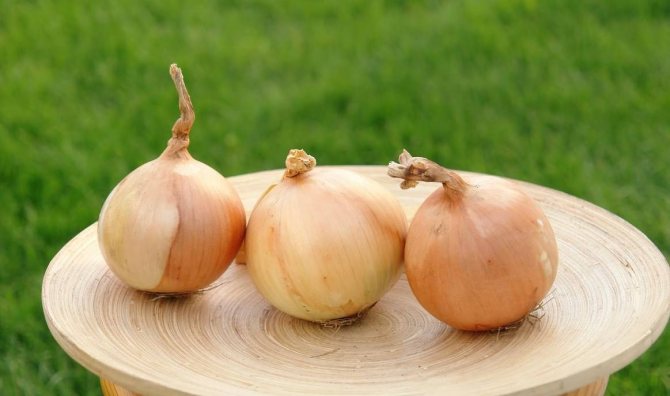

Onion variety Music
Another hybrid variety of onions has a very beautiful name - this is "Music". I call it mid-season, because it takes anywhere from 90 to 120 days to fully ripen, from the moment of the first germination to the moment the harvest begins. Many gardeners recommend planting such onions as an annual crop.
For sowing seeds for seedlings, it is better to choose the month of March, but if you decide to sow seeds directly into open ground, then it is better to take it somewhere in May or at the end of April.
The fruits of such a root crop are round in shape, and their upper scales are colored golden yellow. The inside of the onion is quite dense, and the taste is sweet.
One of the advantages of this hybrid, with such a melodic name “Music”, is its ability not to be exposed to various diseases.
If you provide good care during development, then this type of onion can please you with its excellent yield, which can be about 2.2-2.7 kg / sq.
It has excellent taste and can be used both fresh and for processing.
Sowing onions with seeds
It is best to carry out sowing by the belt method and for this we prepare a bed no more than 1 meter wide. It is important that the soil is as loose as possible, otherwise our seeds will not be able to break through. For the same reason, they should not be too deeply buried and pressed.
To grow onions from seeds in one season, it is best to plant a seed to a depth of no more than 2 centimeters, and leave no more than 1.5 centimeters between them. It is important to comply with the norm, because the quantity and quality of the crop depends on it. Sowing more rarely will result in a large size of the seedlings, and if we plant seeds too often, then a small seed appears and it will germinate quickly.


Next, we carefully close our grooves, compact the soil, and remove all possible air chambers between the seed and the soil. We do not spare peat and humus for our bed and create an additional layer 2 cm thick. Now we carefully water the bed with onion seeds so as not to blur anything.
As soon as all procedures are completed, it is important to cover the bed with a film and thus create the desired air and water regime. We are waiting for the emergence of seedlings and remove our film.
Purchase "on a jar"
Now on sale there are planting material of rather curious hybrids that form a turnip already in the year of sowing. And this makes life much easier for the gardener, because he no longer needs to mess around with nigella. Of course, there are people (and let the respected summer residents forgive me) who have been doing this with inspiration for years, and they will not exchange their bow and long-standing traditions for anything. But I'm not about them, I'm about those who would really like to grow a good full-fledged crop without unnecessary labor.
For a long time, just like, probably, many gardeners, I bought onion sets in the spring, as we say, "for a jar", but little worked. Either it will go to the arrow, which means that you do not wait for the normal bulbs, it will rot even in childhood, because much also depends on the storage of onions in winter, and, unfortunately, very rarely I came across good seeds during my 32-year history of gardening ... In general, I managed to gather a little for the table, but mostly waited until large onions appeared on the market in order to prepare them for the winter.
And last year I found an article on how to grow onions, but through seedlings
... Oh, interesting idea! I was glad that it was possible to take the path of least resistance, but that was not the case. After all, as respected summer residents correctly say, you also need to turn on your head and measure local conditions, making the appropriate amendments. I, dreaming about my onion, threw myself into a whirlpool with my head: I sowed it on seedlings, poured with it, transplanted it when it got warm, and there was even more waste.
The thing is that in our Central Black Earth Region the weather, like a vanka-vstanka, is tumbling: in April there can be heat under 30 °, and frosts. The year before last, the first option happened, and, in short, all the onion seedlings dried up, although I watered it every day. True, a few onions miraculously survived, and I really liked both the taste and the way they behaved in storage.
A tasty alternative
During the long winter, I kept thinking: “What if we try to sow seeds right into the garden? After all, logically, if a light frost happens, the onion should not give a damn about it. "
In general, I decided to take a chance and bought a pack of seeds of two hybrid varieties: Red Hill and Terenty
... Each package was enough for a line in a 10 m long garden bed, while the seeds turned out to be treated for diseases, and I did not have to soak them in any miracle solutions.
I dug up the earth, brought in humus, dug up again, drew grooves, spilled them with a pink solution of potassium permanganate and sowed seeds every 15 cm in a row. I covered them with a 5 cm layer of soil, left 20 cm between rows, so that later it would be easier to carry out loosening. It was around April 12th. I remembered the date because before Easter I had to sow all cold-resistant crops, and then plant potatoes (I also don't wait with it for the heat to come and the beetle will climb - when this happens, it already begins to bush with me, and all such misfortunes side).
Growing onion sets


In the previous article, questions about the basic requirements for growing onions and preparing a plot for onions were highlighted, so we will not return to them, but proceed directly to the pre-sowing preparation of seeds and their planting.
Landing dates. First of all, we decide on the landing date, this is one of the most important points. Sowing is carried out as soon as the soil allows, because even with a slight (especially in dry years) delay in sowing, both the field germination of seeds and the yield and quality of seedlings are reduced. In this case, onion sets ripen very poorly and, most importantly, are not stored for a long time.
In central Russia, planting is best done in the last decade of April, if the weather does not bring any surprises.
And one more thing, although it is believed that nigella (also called onion seeds) retains its germination without loss for 2 years, but I advise you to still use annual seeds.
Seed preparation. First of all, let's check the seeds for germination, for this we place a few pieces of seeds between layers of damp cloth and put in a warm place. If after a while sprouts appear, then you can start preparing for sowing.
Next, we determine whether treatment is necessary for our seeds: the seeds that we buy in specialized stores have basically all already been disinfected (although there are exceptions), but the seeds that you yourself have grown, it is advisable to treat with any fungicidal dressing agents.
Or you can use a weak solution of potassium permanganate for this and keep the seeds in it for one day. It is very good to warm up the seeds for 30 minutes in hot water with a temperature of about 50 degrees, and also soak them in aloe juice for 30-40 minutes.
To speed up the emergence of seedlings (onion seeds germinate very slowly), soak the seeds in water at room temperature. This must be done 3-4 days before sowing.
Pour the seeds into a cloth bag, filling it in half, tie it and put it in water for 30-35 hours. During this period of time, we change the water 3-4 times.
Then we sprinkle the already swollen seeds with a thin layer on a damp cloth, cover them on top with a second layer of damp cloth and leave them warm.
After two days, the seeds will begin to hatch and you can start sowing, but after we dry the nigella a little so that it becomes free-flowing, we mix it with chalk so that the seeds are better visible on the dark ground.


Sowing seeds. Sowing is carried out in a belt manner on a bed about 1 meter wide with very loose soil. Loose soil when sowing nigella is necessary because it will be very difficult for an onion sprout, which has the shape of a loop, to break through to the surface if we have dense soil or if we deeply bury the seeds in the ground.
In this regard, we sow seeds into grooves 1.5-2 cm deep.It is desirable to maintain the distance between the seeds 1-1.5 cm.
The seeding rate of seeds is very important, since the growing season of the seed, as well as the quantity and quality of the crop, depends on it.
If we sow seeds rarely, then a large seed (samples) will grow, which will not have enough time for ripening.
If we sow the seeds often, we will get an immature small seed (non-standard), which is poorly stored and begins to germinate early.
Then we carefully close the grooves, compact the soil so that there are no air chambers between it and the seeds.
We mulch a bed with sown onion seeds with peat or humus with a layer of about 2 cm, and then water it carefully, trying not to blur the planting.
After that, it is advisable to cover the bed with plastic wrap in order to create a favorable water and air regime for the early germination of seeds. After emergence, the film must be removed.


Crop care. First of all, you need to carefully monitor so that a soil crust does not form and remove all weeds in a timely manner. If we have weeds on crops during the germination period, then the yield of onions decreases to 50%, and the ripening of the bulbs is very noticeably delayed.
With the formation of a soil crust, onion shoots are sparse and uneven, which also leads to a decrease in yield and a deterioration in its quality.
Sometimes weeds appear before onion shoots and there may be a danger of destruction of onion seedlings when weeding and loosening.
To prevent this, it is very good to add a little lettuce or radish seeds to the nigella seeds when sowing. They will come up first and show us the location of the onion rows, and after the onion shoots, the beacon plants can be removed.
When the seedlings have 1-2 true leaves, we carry out the first thinning of crops in highly thickened places, leaving 1.5-2 cm between the plants.We carry out the second thinning after the formation of 3-4 leaves and leave a distance of 4-6 cm between the plants.
I would like to draw your attention to the fact that both weeding and thinning should not be delayed in any case, since otherwise thickening accelerates the formation of bulbs, the plants do not have time to form a sufficient number of leaves and the bulbs are small.
Water the onion plantings 1-2 times a week, provided the weather is dry, and only in the first half of the growing season (May - June). Then we stop watering, as the bulbs are ripening.
And 1 week before harvesting, it is recommended to carry out foliar feeding of crops with potash fertilizer, as this contributes to better ripening of the seedlings.
Harvesting, preparation for storage and storage features. We start harvesting onion sets in the second half of July - August (depending on the weather), as soon as the leaves turn yellow by a third of the height.
You can read about harvesting onions and preparing them for storage in the previous article on onions.
It is necessary to store the grown onion sets in different ways, depending on its size. Therefore, the first step is to sort it into small ones with a diameter of up to 1.0 cm, medium - 1.5-2.5 cm and large - more than 3 cm.
Sevok is best stored in cloth bags and in a dry, well-ventilated area. For shallow seedlings, the optimal storage temperature is 0 ° C, because since it is prone to drying out, at a higher temperature such onions can completely die.
The problem of storing small sets (non-standard) can be solved by planting it before winter, because it does not shoot under any conditions and can give an excellent harvest of turnip onions.
Medium and large seedlings keep well at room temperature (up to 18 ° C). At higher or lower storage temperatures, the onion sets may go to the arrow after planting.
Onion hybrids paid off!
What I also liked: 90-95 days passed from germination to full ripening of the bulbs. Already on this basis alone, you can navigate and see what kind of climate someone has and how long the summer lasts in different regions.
Maybe many do not need to toil with seedlings, these are not thermophilic tomatoes or peppers! When choosing hybrids, I also took into account the shelf life. For example, Krasnaya Gorka lays calmly for up to 10 months and does not lose its beautiful red color. And Terenty did not disappoint either.
How to grow onions from seeds, to what depth to plant seeds on a set
Onions multiply in a variety of ways. You can spend several years waiting for the bulb to produce additional buds for transplanting, or you can simply sow the seeds.They are also called blackies, as they are black in color and small in size. Growing onions from nigella is very convenient. In one year, you can get a full-fledged harvest without the problems and expenses associated with the purchase and storage of onion sets. Using different planting methods, you can grow onions of any ripening duration in just one summer.
ONION TIPS: SECRETS OF A GOOD HARVEST?
There is never too much onion, but not everyone manages to replenish their stocks with a bountiful harvest. Agree that it is not so difficult to grow this crop, but this is where complaints arise that the onion is either arrowed, or its pests eat it, or it grows small, or rots altogether.
What and when to plant
Plant onions with the smallest specimens of sets (no more than 1 cm in diameter), and exclusively for the winter, but here's why:
- it does not go in the "arrow" compared to a bow planted in spring,
- it is less susceptible to onion fly attacks, because by the time the latter flies out to "hunt", the bow is already gaining strength and becomes "too tough" for the pest,
- it ripens earlier, which makes it possible to harvest it before the season of long rains, cold morning dew and other joys of nature that affect the keeping quality of the crop.
What is the secret of leaving
Loosening the soil and removing weeds
It is important to carry out the first weeding of plantings on time, and this must be done carefully so as not to damage the fragile bulbs. Further, you will only need to regularly loosen the soil, the number and frequency of which depends on the composition of the soil layer: the denser it is, the more often this operation must be repeated.
Watering
As soon as the soil dries out from the melted snow, you need to water the onions regularly until about mid-June, and then looking at the weather. As soon as the bulbs begin to ripen, watering should be stopped, otherwise the keeping quality of the crop will deteriorate significantly.
Thinning
Timely harvest weak and poorly growing bulbs, allowing the rest of the fruits to develop in full force.
Top dressing
If possible, plant the onions in green manure-free areas or in compost-lined beds. In the spring, bring ash under the planting.
Planting seedlings in open ground
When the seedlings of the seedlings are fulfilled 55-60 days, it can be transplanted to a permanent place. If you do this at the wrong time, then the plants will adapt to new conditions longer. If grown in a greenhouse method, the seedlings are transferred with a small clod of earth.
Transplant process:
- Sorting is carried out first. Damaged and weak seedlings are removed.
- Before planting, the roots and greens are cut by 1/3.
- The seedlings are dipped in a mullein and clay mash.
The transplant is carried out on a warm and dry day. Usually in May.
- They dug up the bed and make furrows. Further, the land is watered abundantly and seedlings are planted.
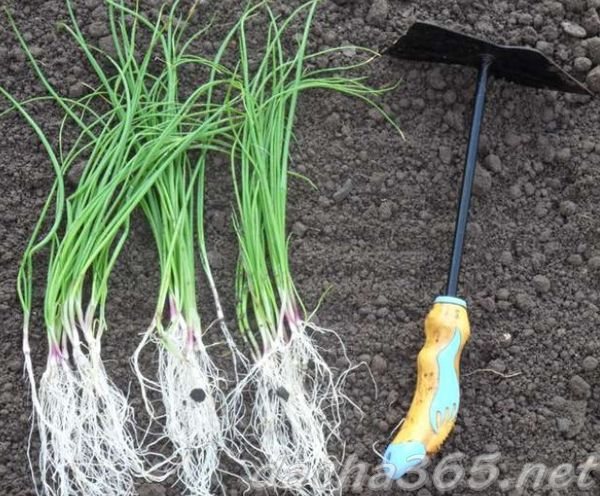

- Sprouts planted 2 cm deep after 7-10 cm from each otherleaving in row spacing 30-55 cm.
- After that, the planting is watered - 1 liter of water for each seedling. The earth is compacted and mulched.
- Loosening can be carried out after 3 days.
Watch the video! Onions in one season through seedlings
A little about harvesting kerf
When the time comes
Winter onions are harvested early, starting in early July. How do you know if it's time to harvest? It's simple: if the feather "lies", the bulbs are covered with covering scales and easily get out of the ground - it's time. It is undesirable to overexpose it in the garden bed, since in this case, the growth of roots begins again, as a result of which it will be quite difficult to preserve such a crop. Some summer residents do not harvest onions all at once, but as they ripen, but this option is not suitable for summer residents who visit their lands exclusively on weekends.
A few words about drying
It is advisable to remove the bulbs when the weather is dry, since in this case it can be left to dry naturally in the sun for a couple of days, due to which, as a result of the action of ultraviolet rays, it will also undergo a kind of disinfection and will be better stored. When this is not possible, harvest the crop in the morning, so that it can at least during the day "-pap" in the sun.
Next, the onion should be put on additional drying. Most often, many summer residents use an attic for these purposes.There is no rush here: the better the bulbs dry out, the more likely you are to keep them for a longer time.
How to determine the readiness of the onion? Just look at his neck, which should dry completely. And then we send the onion for storage.
Onions are very responsive to loosening the soil underneath, especially after watering and precipitation.
L. KOSTINA Voronezh region
Below are other entries on the topic "Cottage and garden - do it yourself"
- Useful properties of onions that few people know about: Common onion and its ...
- Growing onion "Exhibition" in the Arkhangelsk region - reviews: Onion varieties Exhibition - planting ...
- Onion Variety Radar - Planting and Growing: Growing Dutch Onions Radar Not so ...
- Ishikura onion - cultivation: Ishikura is such an onion ... For the first time I ...
- Planting and Growing Chopped Onions: Another way to grow onions ...
- Why and what does the onion hurt ?: The onion rots - the reasons and ...
- Onions - grown in Western Siberia: Onions - grown in ...
Subscribe to updates in our groups.
Let's be friends!
Harvesting and storage
When the feathers of the onions turn yellow and wilted, they begin to collect the bulbs. Usually this period falls on the last decade of July or the first half of August. If the ground part of the plant has not acquired yellowness, then the vegetable is dug up and must be placed in the sun so that it is finally ripe. After the onion dries out, remove the yellowed feathers, leaving a "tail" 5 cm from the top and roots - 1 cm from the base. Then the bulbs are dried well in the sun or near heating appliances.
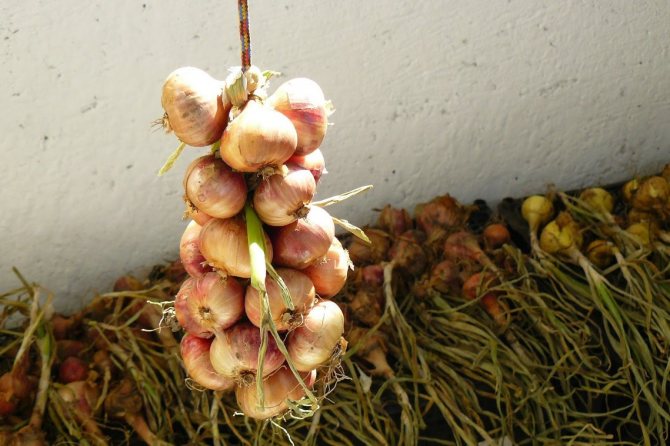

The harvested crop must be sorted out, sorted out damaged and rotten specimens, and smaller fruits should be set aside separately for sowing "before winter". The onions selected for storage are placed in wooden boxes or bags made of dense fabric. The bulbs are also hung up, placed in nylon stockings, or braided with braids. Then they are moved to a dark, cool room (basement, underground).
The optimal temperature regime in room conditions is + 18 ° С. In the basement, varieties with a spicy and semi-sweet taste are stored at 0 ... + 1 ° С, and spicy bulbs - at -1 ... -3 ° С. Vegetables should be inspected periodically and rotted and dry specimens should be removed.
Important! Raw, poorly dried onions are not stored for storage - vegetables can quickly begin to rot.
Growing onions from seed in one period has many advantages and is well suited for areas with short summers. This can be done by choosing the right variety and using the seedling method of growing.

